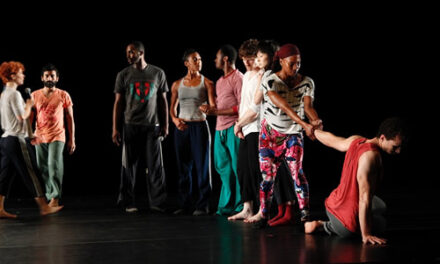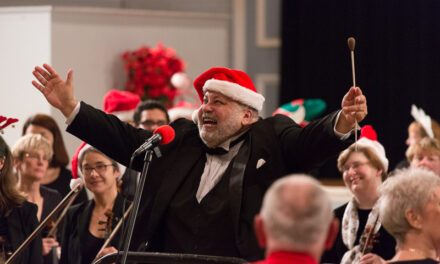Keowee Chamber Music has discovered a new host in the First Congregational United Church of Christ. The downtown church with lively acoustics proved to be a hospitable space for this intimate concert of music for flute and piano. And, two superb musicians have discovered each other. Flutist Kate Steinbeck, Keowee Chamber Music Artistic Director, and pianist Daniel Weiser have only been collaborating since last October, but one would not guess this by virtue of their polished and synergetic performance. There was requisite intensity and finesse, and, moreover, so much ease with one another, almost as though they were channeling each other’s thoughts. The balance between them was always right, no matter what the dynamic level. Their timing was beautifully coordinated, and their interpretive vision of each work seemed spot on.
Their program embraced repertoire from principally the twentieth century by composers of four different nationalities. The rendition of the first work, “Valentine,” by Berlin-born American composer Lukas Foss (1922-2009) immediately set the artistic mark very high.
Then followed three movements of Frösöblomster (Flowers from Frösö), a suite of nationally inspired character pieces originally for piano by Swedish composer Wilhelm Peterson-Berger (1867-1942). “Song of Summer,” a melodious and consonant movement which is the most famous of the set, recalls the lovely summer evenings on the island of Frösö where the composer vacationed. “Lawn Tennis” suggests a leisurely gentleman’s game of gentle arcs rather than athletic competition, and the set concluded with “Congratulations.”
Two sonatinas, one by English composer Lennox Berkeley (1903-1989) for alto recorder from 1940 and premiered by Carl Dolmetsch, and one by French composer Philippe Gaubert (1879-1941) in two movements were sound worlds apart from one another. The Berkeley sonata began with agitated figurations in the piano, and a sort of dissonant restlessness permeated the first movement. The serene second movement afforded moments of rapture and repose, as though time itself were suspended. The third movement, a whimsical “Allegro” with exotic scalar figures, romped with a delightful sense of abandon. The Gaubert Sonatine Quasi Fantasia afforded the players more freedom through its many tempo changes and its improvisational style, and its harmonic and melodic palettes were overtly sensuous. Especially noteworthy was its sectional second movement “Hommage à Robert Schumann,” which mined the various aspects of Schumann’s own compositional persona.
Two movements from the Suite for Flute and Jazz Piano Trio by Claude Bolling (b. 1930) written for Jean-Pierre Rampal, performed as “music minus two” (drums and bass), concluded the program. The second movement “Sentimentale,” played first, established its smoky, languid mood with the flute’s first phrase in its low register then repeated up an octave as the writing morphed into blue notes and syncopated jazz riffs. The first movement “Baroque and Blue” works almost as a comedy routine, with the flute as straight man presenting the theme in even eighth notes, to be chased in stretto by the piano who, irrepressible and mischievous, frequently digresses into jazzy solo passages. Though the drums were absent, the performance rocked with rhythmic intensity and the sheer ebullience of two professionals who clearly enjoy making music together.
Keowee Chamber Music begins its Tenth Anniversary Festival June 8-20, with live radio concert broadcasts over WCQS on June 14 and 21. Check the CVNC calendar for further information.












